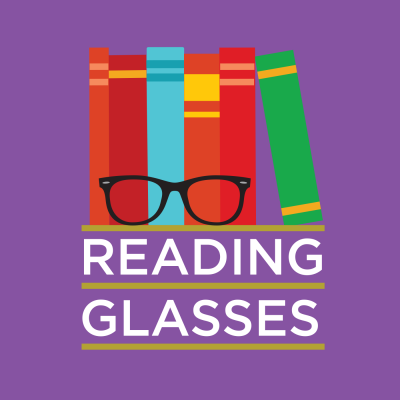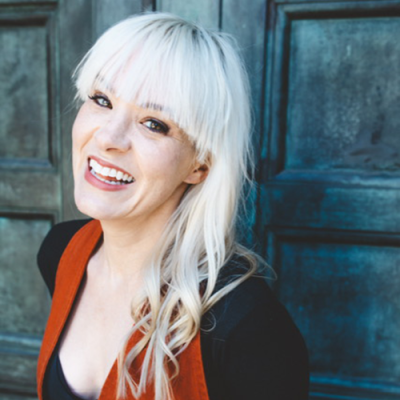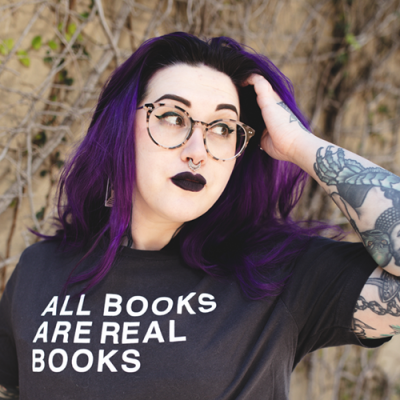Episode notes
Mallory and Brea break down all the different book types, talk about transitioning from graphic novels to prose books, and interview Tor.com’s Mordicai Knode.
Mordicai Knode-
Mordicai’s Twitter
Books Mentioned
The Flamethrowers by Rachel Kushner
River of Teeth by Sarah Gailey
Every Heart A Doorway by Seanan McGuire
The Book of the New Sun by Gene Wolfe
House of Leaves by Mark Danielewski
Silver on the Road by Laura Anne Gilman
Stories of Your Life and Others by Ted Chiang
Episode Outline –
What Are You Reading?
Mallory is reading The Flamethrowers by Rachel Kushner and Brea is reading River of Teeth by Sarah Gailey.
Main Topic
This week, we’re breaking down book formats. Hardcover, trade paper, mass market paperback, epub, mobi, ah! So many! Different prices, different sizes! We’re here to give you a run down of all of them to make your book acquiring choices more informed.
A bit of history about book publishing — for a long time, not many books like we think of them today were published because there wasn’t the means and a lot of people couldn’t read. Before 1500, manuscripts could be counted in the 1000s, but after 1500, only 50 years after it became easier to print books, that number rose to 9 million. In the 1800s, after fights over freedom of the press (the dissemination of the printed word was seen as very dangerous by folks in power), the job of author, printer, publisher and bookseller often were one and the same for a long time. In the 19th century, new ways of printing came around and the industry changed again. You didn’t have to handmake paper and binding became much cheaper. By the 1850s, you get mass production of books so they become even cheaper and easier to access. Books: not just for rich people anymore!
For physical books, there’s three main types of books you’ll encounter. First up is hardcovers, also known as hardbacks or hardbounds. Typically released first, they are the biggest, heaviest and most expensive. A lot of people collect these, but now they can range from 19.99 to 30.99. They’ve usually got dust jackets (the cover flap things). The pros to hardcovers is that they’re more durable! They do look nice. Brea was a professional book flap protector person for a while in high school! Meaning she covered dust jackets with plastic coverings for a library.
Next up, trade paperbacks. These are soft covers, as in they have a paper cover, and are medium sized, bigger than a mass market and with better paper quality. They’ll usually have the same layout and similar letter size/spacing as the hardcover. Some companies will release a new cover with the paperback release, or might release it straight to paperback, so it’ll be called a paperback original. They’re cheaper but usually literary editors won’t review them if a book goes straight to paperback. History of the paperback: it became popular during the second world war because there was interest in reading and they needed a cheaper way to do it.
Then, you’ve got the mass market paperback. These are the smallest, usually able to be shoved into the back pocket of your pants, with the lowest quality of paper. Usually around 4×7. They are the cheapest, however. But least durable with the closest line spacing. Good for travel! Usually the last to be released, they are available in most accessible places, like grocery stores, drugstores and airports.
There are also ARCs – advanced review copies of books. Sometimes you’ll find these for uber cheap in used bookstores, even though they’re not supposed to be sold! They’ll usually have no cover design, just the title, and be the size of a hardcover, without the actual hardcover. They’ll be laid out like the hardcover, but sometimes there are still copy editing errors, or no acknowledgements section. They’re solely for the purpose of sending to reviewers.
Ebooks also come in different types! Some books can only be read on certain devices, because of something called DRM. It’s a security mechanism by most big platforms and publishers, called Digital Rights Management. Basically this means that if you buy a book from a specific platform, like from Amazon, you wouldn’t be able to read it on your Nook from Barnes and Noble.
You can find DRM-free books, but they’re harder to find! Tor.com and Forge are both DRM free.
Epubs are the common format, for everything but a Kindle. On an iPad in iBooks, on a Nook, on a Kobo, on a Nexus. Mobi files are the files you need for a Kindle. Library apps usually offer both mobi and epub files. You can read PDFs on any device, but the font size isn’t adjustable and it can be harder to read, especially on a Kindle.
DRM is something to consider when buying ebooks and ebook readers in the long term!
Interview with Mordicai Knode
Mordicai Knode is the marketing manager of Tor.com, which is an imprint of Tor Books. All of Tor’s ebooks are DRM free because they’ve found it doesn’t affect their sales. People who pay for books are generally good people! They’ve had a great experience with it. It doesn’t seem to affect piracy. It seems that people who were going to illegally download books would regardless. eBook layouts are completely different than the layouts of hardcovers, paperbacks or mass markets so that they can be adjustable in individual eReaders. Mordicai likes to get big, weird tomes for friends like Mark Danielewski’s House of Leaves and always carries a roleplaying book with him on the subway. He thinks that the most surprising thing about the publishing industry is that it’s just full of fans, people that love books.
Listener Question
Now we’re going to solve a reader problem from one of our listeners. Sonya writes
I used to read nonstop back when I was in grade school. But as soon as I started college I quit. Outside of graphic novels, I haven’t read for pleasure in over 7 years. I’m the only reader in the family. How do I transition from YA novels to age appropriate reading material after such a long gap?
Mallory – I don’t think there is age appropriate reading material. If you want to read some YA, go for it! But if you really want to read adult fiction, you said you like graphic novels. Why not see if any of your favorite comic writers also write novels? It might be a good in for you!
Brea – As a big graphic novel reader myself, I’m going to repeat what Mallory said and say there is no problem with just sticking to what you like. But I think finding books in the same vein as graphic novels could really work. If you read science fiction graphic novels, why not try some of the award-nominated sci-fi books this year? Even some of the novellas could work as a way to dip your toe into reading. If you read graphic novels that are more relationship-focused, maybe try a good literary fiction. Try something new that came out this year.
We’re going to leave you with this episode’s Book Connection, a way to connect with other readers online. This week’s hashtag is #FightForYourBookType. We want you to weigh in – what type of book do you prefer to read? Tweet at us! What eReader do you use? We’ll run a poll on twitter!
If you liked the show, please rate and review us on iTunes! It’s really great for us and helps us reach more readers! You can email us at readingglassespodcast at gmail dot com, find us on Twitter at readingGpodcast, on Instagram at readingglassespodcast, and you can always follow along on our bookish adventures using the general hashtag #readingglasses. Thanks for reading!
In this episode...
Guests
- Mordicai Knode
About the show
Do you love books? Want to learn how to make the most of your reading life? Join hosts Brea Grant and Mallory O’Meara every week as they discuss tips and tricks for reading better on Reading Glasses, a podcast designed to help you get more out of your literary experiences.
As professional creatives and mega-readers, Mallory and Brea are experts on integrating a love of reading into a busy lifestyle. Listeners will get help for bookish problems, like how to vanquish that To-Be-Read pile and organize those bookshelves. Brea and Mallory also offer advice on reader dilemmas. How do you climb out of a reading slump? How do you support authors while still getting books on the cheap? Where do you hide the bodies of the people who won’t stop talking while you’re trying to read? No matter what you read or how you read it, Reading Glasses will help you do it better.
Follow @ReadingGPodcast on Twitter and @readingglassespodcast on Instagram. Email Brea and Mallory at readingglassespodcast@gmail.com.
Sign up for the Reading Glasses Newsletter here!
Get in touch with the show
People
How to listen
Stream or download episodes directly from our website, or listen via your favorite podcatcher!


